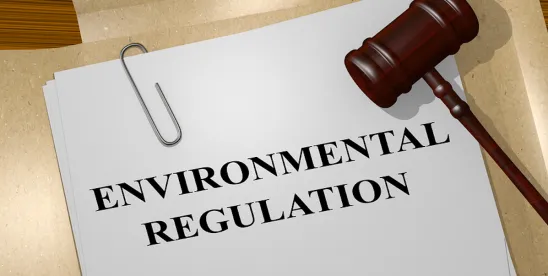On April 28, 2025, EPA Administrator Lee Zeldin revealed the agency’s strategic plans across program offices to address per- and-polyfluoroalkyl substances (PFAS), commonly known as “forever chemicals.” This marks the first public announcement from the new Trump Administration on this issue. EPA aims to implement comprehensive actions targeting PFAS in areas such as water, air emissions, land, waste, and manufactured and imported products. Although specific details are still pending, the announcement foreshadows potential regulatory and enforcement actions the agency may prioritize in the coming months, guided by principles of strengthening scientific research, fulfilling legal obligations, enhancing communication, and building partnerships.
Fulfilling Statutory Obligations and Enhancing Communications. EPA intends to use existing statutory authorities to tackle PFAS compliance challenges, though it has not clarified how it will “[a]ddress the most significant compliance challenges and requests from Congress and drinking water systems related to” the maximum contaminant levels (MCLs) limiting certain PFAS in drinking water. Importantly, EPA has indicated that its goal is to prevent further PFAS contamination through its Clean Water Act authority. This will involve developing effluent limitations guidelines for PFAS manufacturers, which may lead to monitoring and discharge limits in future National Pollutant Discharge Elimination System (NPDES) permits. This would be consistent with a recent proposal to require PFAS monitoring and controls in the next Multi-Sector General Permit (MSGP), which regulates stormwater discharges from industrial activities.
Moreover, the announcement suggests that EPA may revise its PFAS Reporting Rule—which Congress required EPA to implement pursuant to Section 8(a)(7) of the Toxic Substances Control Act (TSCA)—to “smartly” gather essential information without “overburdening small businesses and article importers.” However, EPA did not specify whether it intends to extend the reporting period or modify the current compliance deadlines. The agency also intends to add PFAS to the Toxic Release Inventory pursuant to the 2020 National Defense Reauthorization Act and employ TSCA limitations to mitigate future contamination risks from the use of PFAS.
While the press release did not specifically mention the regulation designating PFOA and PFOS as hazardous substances under CERCLA (also known as Superfund), it did indicate that EPA plans to work with Congress and industry to establish a “clear” liability framework that focuses on “ensur[ing] the polluter pays” while protecting “passive receivers.” Additionally, EPA intends to increasingly rely on its Safe Drinking Water Act (SDWA) authority to investigate and address immediate PFAS threats to drinking water sources and investigate ways to address PFAS releases from manufacturing operations of both producers and users of PFAS using its Resource Conservation and Recovery Act (RCRA) authority.
Strengthening the Science. EPA plans to appoint an agency-wide lead to manage PFAS work across all agency programs to ensure alignment across programs. EPA will use its authorities to seek additional information on hazard characteristics, exposure pathways, and other informational gaps about PFAS occurrence through its TSCA Section 4 test order authority. Additionally, EPA will develop improved PFAS detection methods, bolster air-related PFAS monitoring, and provide more frequent updates to its PFAS Destruction and Disposal Guidance. The category’s name (“Strengthening the Science”) suggests that the information obtained through these efforts might be used to reassess the scientific bases for PFAS regulatory developments under the Biden Administration.
Building Partnerships. EPA’s statements suggest it plans to lessen the burdens on drinking water utilities to remove PFAS from drinking water by prioritizing remediation and cleanup efforts of sites that release PFAS into the utilities’ source waters. In addition, the announcement emphasizes collaboration with states and tribes on PFAS enforcement and site risk assessments, which suggests a cooperative federalism approach for PFAS restrictions and requirements across state jurisdictions. Additionally, EPA continues to take public comments on its proposed PFAS biosolids risk assessment and plans to review state air petitions relating to PFAS. EPA provides no hints as to which way this administration is leaning on these issues.







 />i
/>i

